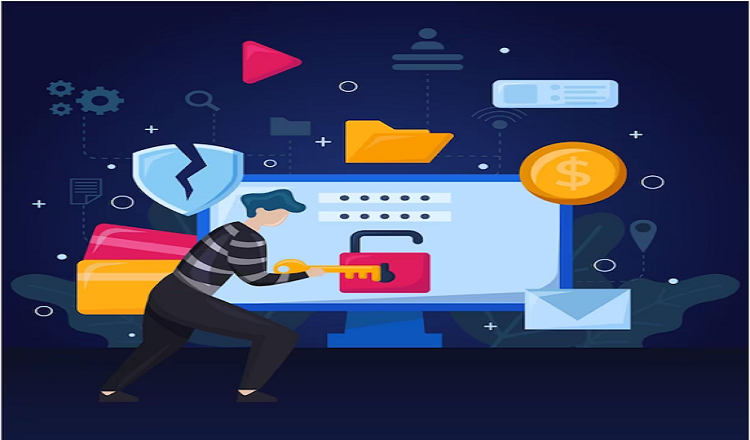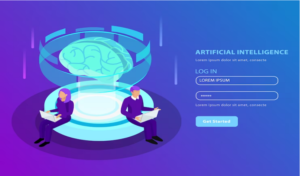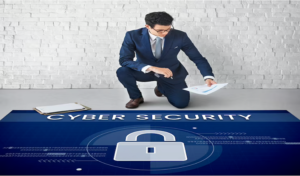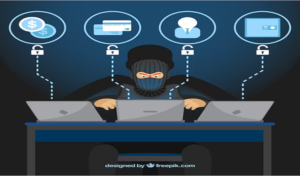The evolving threat of cyber-attacks and data breaches

As the world becomes more digital, cyber-attacks and data breaches have become a serious problem for everyone, including businesses, governments, and people. No one is safe from the damage that could be done by a successful cyber-attack or data breach. This is true for both financial companies and healthcare providers. We can’t ignore the growing danger of these attacks in the US, and it’s important to know what cyber-attacks and data breaches are, how they can affect us, and what we can do to protect ourselves.
First of all, a cyberattack is any attempt to use or break into computer systems or networks for bad reasons. This can be done by stealing private information, making things go wrong, or installing software that does harm. On the other hand, a data breach is when personal or private information is accessed without permission. This information can be personal, like names and addresses, or it can be financial, like credit card amounts and bank account information.
Cyberattacks and data breaches are becoming a bigger problem in the USA, which is sad. Recent high-profile attacks, like the hack on SolarWinds and the ransomware attack on Colonial Pipeline, have shown how exposed even the biggest companies can be. Since cybercriminals are getting smarter and trying new ways to get to private information, it is clear that we need to take action to protect ourselves and our businesses.
Cyberattacks and data thefts of different kinds
There are many different kinds of cyberattacks and data breaches that can happen in the United States, and each has its own methods and effects. Malware attacks, for example, involve installing dangerous software that can stop the computer from working properly or steal private information. Phishing scams, on the other hand, use fake emails or websites to trick people into giving out personal or financial information. Ransomware is a type of malware that encrypts a person’s data and then asks for money to unlock it.
The effects of these attacks can be bad for people, companies, and governments alike. When someone steals your personal information, they can use it to steal your name and take money from you. Data breaches can hurt a company’s image, cost them money, and put them in legal trouble. Cyberattacks can have a negative effect on national security, put sensitive information at risk, and disrupt key infrastructure. People and businesses need to know about these different types of cyberattacks and data breaches and take steps to protect themselves from these risks.
Cyberattacks and data thefts and their effects
Cyberattacks and data leaks in the United States can have big and far-reaching effects. Theft or problems with operations that cause financial losses can be very bad for both people and companies. Also, if sensitive information is stolen, a data breach can hurt a company’s image and make customers less likely to trust it. Losing private information like trade secrets, intellectual property, or personal information can have long-lasting effects on both people and businesses.
Also, cyberattacks and data thefts can have an effect on US national security. Critical infrastructure like power lines, water treatment plants, and transportation systems can be damaged or shut down, causing widespread chaos and damage. Government organisations can also be attacked, which could lead to sensitive information getting out and putting national security at risk. Because of this, it’s important for people, companies, and governments to take cybersecurity seriously and take steps to stop cyberattacks and data breaches.
Where hacking stands in the US right now
The state of hacking in the United States is complicated and always changing. Even though technological advances have made it easier to connect with others and make our lives easier, they have also made us more vulnerable to hackers and given them more chances to do harm. Cybersecurity is now a top concern for everyone, including businesses, governments, and even individuals.
The USA has taken a number of steps, including government regulations and business best practises, to stop cyberattacks and data breaches and deal with them when they happen. The government has set up a number of regulatory groups and frameworks, such as the NIST Cybersecurity Framework and the Cybersecurity and Infrastructure Security Agency (CISA), to help guide and support cybersecurity efforts. Best practises from the industry, like using strong passwords and updating software regularly, are also suggested to improve cybersecurity. Also, people and businesses can protect themselves from cyber dangers by getting help from cybersecurity experts, getting regular cybersecurity training, and putting in place advanced security solutions.
Cyberattacks and data thefts are changing in new ways.
In the United States, the danger landscape of cyberattacks and data breaches is always changing, and new trends pose big problems for cybersecurity. One of these trends is that attacks are getting more complicated. Cybercriminals are using new methods like artificial intelligence and machine learning to make their attacks more focused and effective. Targeted attacks are also becoming more common. These are strikes on specific organisations or people, often using social engineering techniques like spear phishing.
Emerging technologies like AI and IoT are also changing the threat landscape. More connected devices and more dependence on automation create new attack surfaces and vulnerabilities. IoT gadgets, in particular, don’t always have good security, which makes them appealing to cybercriminals. To stay ahead of these new dangers, people and organisations need to stay alert, use the best cybersecurity practises, and put in place advanced security solutions.
Strategies for keeping cyberattacks and data breaches from happening
In the US, protecting against cyberattacks and data breaches takes a multifaceted approach that combines technical solutions, user education, and proactive risk management. For extra protection, it’s important to use strong passwords and turn on two-factor authentication. It’s also important to stay away from phishing scams, which can trick users into giving out private information or downloading malware. Keeping software up-to-date with the latest security patches and fixes can also help stop known flaws from being used.
But it’s just as important to put training in cybersecurity knowledge and managing risks ahead of time at the top of the list. Employees should be taught regularly to spot suspicious behaviour and report it, as well as to follow best practises for cybersecurity. Organisations should also have proactive risk management plans in place, such as regular security audits, penetration testing, and a plan for how to handle an event. By being cautious and looking at cybersecurity as a whole, people and businesses in the USA can better protect themselves against cyberattacks and data breaches.
Conclusion
In the end, the growing threat of cyberattacks and data breaches in the United States is a growing worry for people, companies, and the government. With attacks getting smarter and more connected gadgets being made, the threat landscape is always changing and getting more complicated. Cyberattacks and data breaches can have very bad effects, such as financial losses, damage to a company’s image, and even threats to national security.
Readers should take steps to improve their cybersecurity stance in order to protect themselves and their organisations. This means using strong passwords and two-factor authentication, staying away from phishing scams, keeping software up-to-date, and looking for training on cybersecurity knowledge. Also, people and businesses should use proactive risk management techniques, such as doing regular security audits and having a plan for how to handle an event.
People and businesses in the USA can better protect themselves from the growing threat of cyberattacks and data breaches if they stay aware and take a proactive approach to cybersecurity. Everyone needs to take hacking seriously and do what they can to protect themselves and their businesses.
Read More You May Like:








